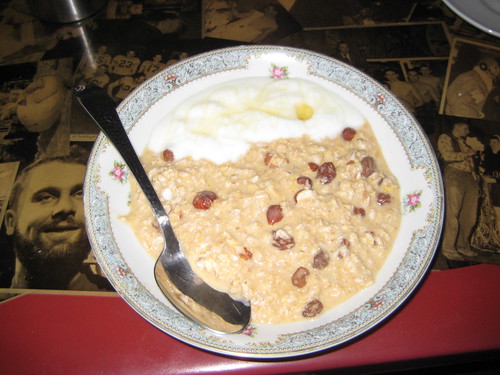the organic salon: a review (and $20 coupon giveaway!)
 I'll begin by confiding that I'm a Horst Rechelbacher admirer. As a Minnesotan, I derive a great sense of pride from knowing how fortunate we are to have such a visionary in our midst (technically, Horst lives across the St. Croix river, in Osceola, WI, but his businesses are located in MN). Furthermore, Aveda Corporate headquarters is located in Circle Pines, the suburb of my youth. If you're not too familiar with Horst or his endeavors, I recommend reading his Wikipedia entry. After selling Aveda to Estee Lauder in 1997 for an estimated $300 million, Horst focused more intensely on the fledgling Intelligent Nutrients (IN) brand, through which Horst has developed a complete line of organic health and beauty products, and more recently, a full service salon run out of the IN flagship store on Hennepin Avenue in NE Minneapolis.
I'll begin by confiding that I'm a Horst Rechelbacher admirer. As a Minnesotan, I derive a great sense of pride from knowing how fortunate we are to have such a visionary in our midst (technically, Horst lives across the St. Croix river, in Osceola, WI, but his businesses are located in MN). Furthermore, Aveda Corporate headquarters is located in Circle Pines, the suburb of my youth. If you're not too familiar with Horst or his endeavors, I recommend reading his Wikipedia entry. After selling Aveda to Estee Lauder in 1997 for an estimated $300 million, Horst focused more intensely on the fledgling Intelligent Nutrients (IN) brand, through which Horst has developed a complete line of organic health and beauty products, and more recently, a full service salon run out of the IN flagship store on Hennepin Avenue in NE Minneapolis.
Intelligent Nutrients products are truly awesome. If you like the Aveda line, but are seeking products that contain only natural plant/mineral ingredients (akin to Dr. Haushka), you will love IN (Aveda products do contain a number of harmful compounds, despite the earthy ethos of the their brand). But enough about the products, as this post is dedicated to the new salon, dubbed Intelligent Hair and Skin, which Horst claims is "the first ever USDA certified organic salon."
At this point you might ask: "So why should I care about an organic salon? I'm not going to eat the pomade." It is precisely that attitude which Horst hopes to transform. His new mantra: “What we put on our bodies should be as safe and nutritious as what goes into our bodies,” is not necessarily a new concept, but in true form, he is pushing it further into the mainstream.
If you signed up for IN email promotions earlier this year, you would have received a coupon for 30% off all of services (color, highlights, hair treatments and facial waxing) and a 20% discount on all salon products. A men's haircut starts at about $35, which is only a five dollars more than I currently pay, so this discount was clearly a deal for me.
Overall, the experience was great, easily worth more than the $35 sticker price. Upon being greeted at the door, I was offered a small glass of orange juice mixed with IN's Intellimune Oil - quite refreshing and exotic. My stylist, Catherine, appeared soon thereafter, and she led me into the small salon space, which is in the same room as the store. I'll admit, I've never had a facial treatment before (nor have I sought one), but a "mini" facial/massage is included with a haircut. Over the course of at least 15 minutes, the stylist massaged my head, and used several aromatic products to endow my mug with a "soft glow." Never again will I poke fun at such activities.
The massage/facial really was enjoyable, and left me feeling slightly euphoric upon sitting down for the haircut portion of the experience. Catherine proved adept at cutting hair quickly and stylishly. I didn't schedule the appointment with the intention of adopting a radically new style, the visit was more of a trim, but it was a great cut nonetheless. No gimmicks or overly earnest suggestions, just a quiet, relaxing haircut.
In writing this, I'm not trying to tell you that IN is the only place to get a great haircut - there are quite a few places where one can do that - rather, it is an experience that recognizes the many facets of wellness and well-being, such as the products with which one chooses to slather their hair or skin. These things do matter, and IN is a wonderful, locally-grown place to learn more about them.
And the giveaway? If you get a haircut at the salon, they'll give you several $20-off coupons to pass along to people you know. I have three of them left, which I'll mail to the first three readers who write a thoughtful comment below. The only requirement is that you live in MN/WI, or plan to visit Minneapolis sometime soon.




